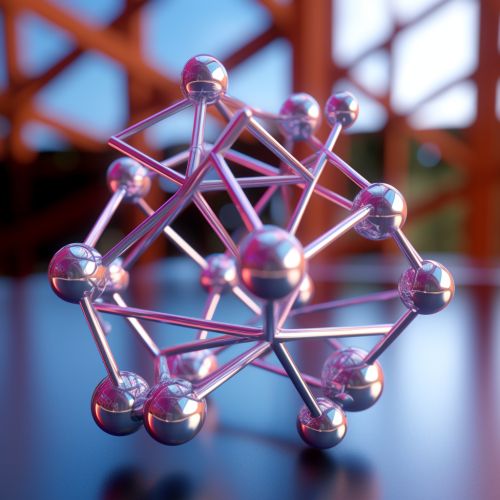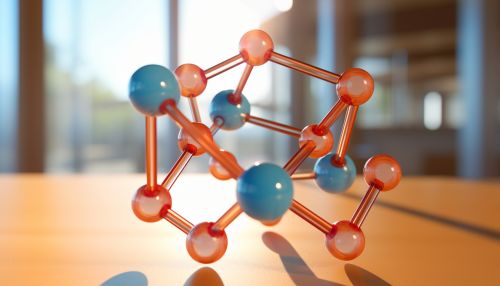Chirality (chemistry)
Introduction
Chirality is a property of asymmetry important in several branches of science, including chemistry, biology, and physics. The word chirality is derived from the Greek χειρ (kheir), "hand," a familiar chiral object. An object or a system is chiral if it is distinguishable from its mirror image; that is, it cannot be superposed onto it. Conversely, a mirror image of an achiral object, such as a sphere, cannot be distinguished from the object. A chiral object and its mirror image are called enantiomorphs or, when referring to molecules, enantiomers.


Chirality in Chemistry
In chemistry, chirality usually refers to molecules. Two mirror images of a chiral molecule are called enantiomers or optical isomers. Pairs of enantiomers often have radically different biological effects. For example, one enantiomer of Thalidomide can treat morning sickness while the other is teratogenic. Similarly, one enantiomer of Methamphetamine is a potent central nervous system stimulant, while the other is sold over-the-counter as a nasal decongestant.
Molecular Chirality
Molecular chirality is of interest because of its application to stereochemistry, the study of how the orientation of atoms in a molecule influences its properties. The term chiral in general is used to describe an object that is non-superposable on its mirror image. In chemistry, the term is used more specifically to describe a molecule that cannot be superposed on its mirror image by any combination of rotations and translations. This property does not depend on the direction of view, i.e., the molecule looks the same from any direction.
Chiral Centers
A chiral center or stereogenic center is the atom within a molecule that is attached to four different types of substituents. The most common chiral center is a carbon atom to which four different groups are attached. This carbon is known as an asymmetric carbon atom, or a chiral carbon.
Chirality in Biology
Chirality is a fundamental aspect of biomolecules and often key to their function. Biochemical reactions are very sensitive to the chirality of molecules; in many cases, only one of two enantiomers can participate in a reaction.
Biological Homochirality
Homochirality is a uniformity of chirality, or handedness. Organisms, for the most part, are homochiral - proteins are made of L-amino acids and DNA and RNA are in the right-handed form. This phenomenon has implications for the origin of life, the search for extraterrestrial life, and attempts to create artificial life.
Chirality in Physics
In physics, chirality may be found in the spin of particles, where it refers to the direction in which the particle spins around its axis, and in the property of particles called helicity, which is the projection of the spin onto the direction of momentum.
Chiral Materials
Chiral materials are made of chiral molecules, but the chirality of the molecules is not always transferred to the material's macroscopic properties. When it is, these materials are said to exhibit chirality.
Chirality in Mathematics
In mathematics, chirality is the property of a figure that is not identical to its mirror image. Chiral polyhedra are perhaps the most basic examples; their vertices (or equivalently, faces) can be divided into two sets, each being the mirror image of the other.
